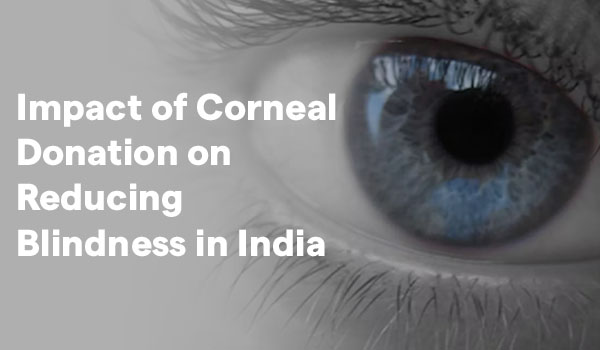
Corneal donation means giving the eye's transparent front part to someone who needs it. This helps people see again if they have corneal blindness. It is one of the best organ transplants India is focussing on to bring back the vision of Indian patients. Many people around the world get their sight back this way. Donating eyes after death is very important for these transplants.
There are two main types: Living and Posthumous Donation.
India has a big problem with corneal blindness, affecting about 420,000 people. Corneal diseases are a major cause of vision problems in developing countries like India and the current stats show that India meets only one-fourth of what patients need. The damage to the eyes can be caused by different conditions like infectious diseases, inflammatory diseases, nutritional deficiencies, and traumas.
Many things make corneal donation hard in India. It is a global concern due to the scarcity of grafts and multiple factors like patients, families, and government. Some of the myths also stop people from donating eyes easily. Some people think eye color changes after donating. Others believe only young people can donate. Learning the truth clears up these myths. Awareness campaigns share real facts. Knowing more helps families decide wisely.
Most people can donate corneas. Age, gender, or blood type don't matter. Some health issues might stop you from donating. Eye banks check each person to see if they can donate. Knowing these rules helps get more donations.
Steps involved in the donation Process
Eye banks are key in corneal donation. They store donated corneas safely. Eye banks work with hospitals and families too. Counselors help donor families understand the process. These actions increase donations a lot. Programs like Hospital-based Cornea Retrieval help in gathering more corneas information on patients. Increasing the awareness of Corneal donation among the people leads to better and hassle-free transplants.
Corneal donation changes lives. Many people see it again because of it. Hospitals have many success stories. Each one gives hope and inspires more donations. A young student had trouble seeing. After a corneal transplant, they did well in school.
Corneal donation lowers blindness in India a lot. Over 25,000 transplants happen each year. Each one helps fewer people be blind. The National Programme for Control of Blindness works on this goal. More donations mean less blindnessCorneal donation helps society long-term. People with sight can work and learn better. Communities grow with more education and jobs filled. The economy gets stronger as more people work in different areas. Corneal donation builds a healthier society.
Beliefs affect corneal donation choices. Some worry about their body after donation. Clear information can help ease these worries. Many religions see organ donation as kind. Most support it or let people choose. Knowing this can lead to more donations.
Not knowing about corneal donation is a big problem. Each cornea helps two people see again. Myths make things worse, like thinking eye color changes, which isn't true. Teaching is key to fixing these myths. Campaigns give real facts and boost donations.
Campaigns are great for boosting donations. They teach how donating helps others see again. Schools and community centers can share this info. Social media spreads the word fast. Stories from those helped inspire more donors. Focus on how it cuts blindness.
Better rules and systems help too. Governments can make eye donation easier. Hospitals should work with eye banks smoothly. Training doctors from the best ophthalmology hospital in Delhi ensure painless donations. More storage spaces mean better care for corneas. Working together makes donating easier.
Corneal donation is better with new technology. New methods make surgeries more successful. Doctors use ready tissues to save time and materials. This helps during emergencies like pandemics. Better storage keeps tissues safe for longer.
Research is key for corneal donation. Bioengineering and therapy have improved a lot. These help fix and transplant corneas as well. Better checks mean more donors can help. Good screening ensures safe transplants. Eye banks and rules stop disease spread.
The goal is to reduce blindness a lot. More donations are needed for this aim. Teaching people about eye donation is important too. One donation can help two people see again.
Corneal donation is important to fight blindness in India. Giving corneas helps people see again. Knowing why cornea donations are needed is crucial. Local communities can help increase eye donations. Government programs can teach more people about this. Working with other countries means more people get help. Everyone working together will support this good cause, leading to less blindness in India. To know more, book an appointment at Sir Ganga Ram Hospital today.